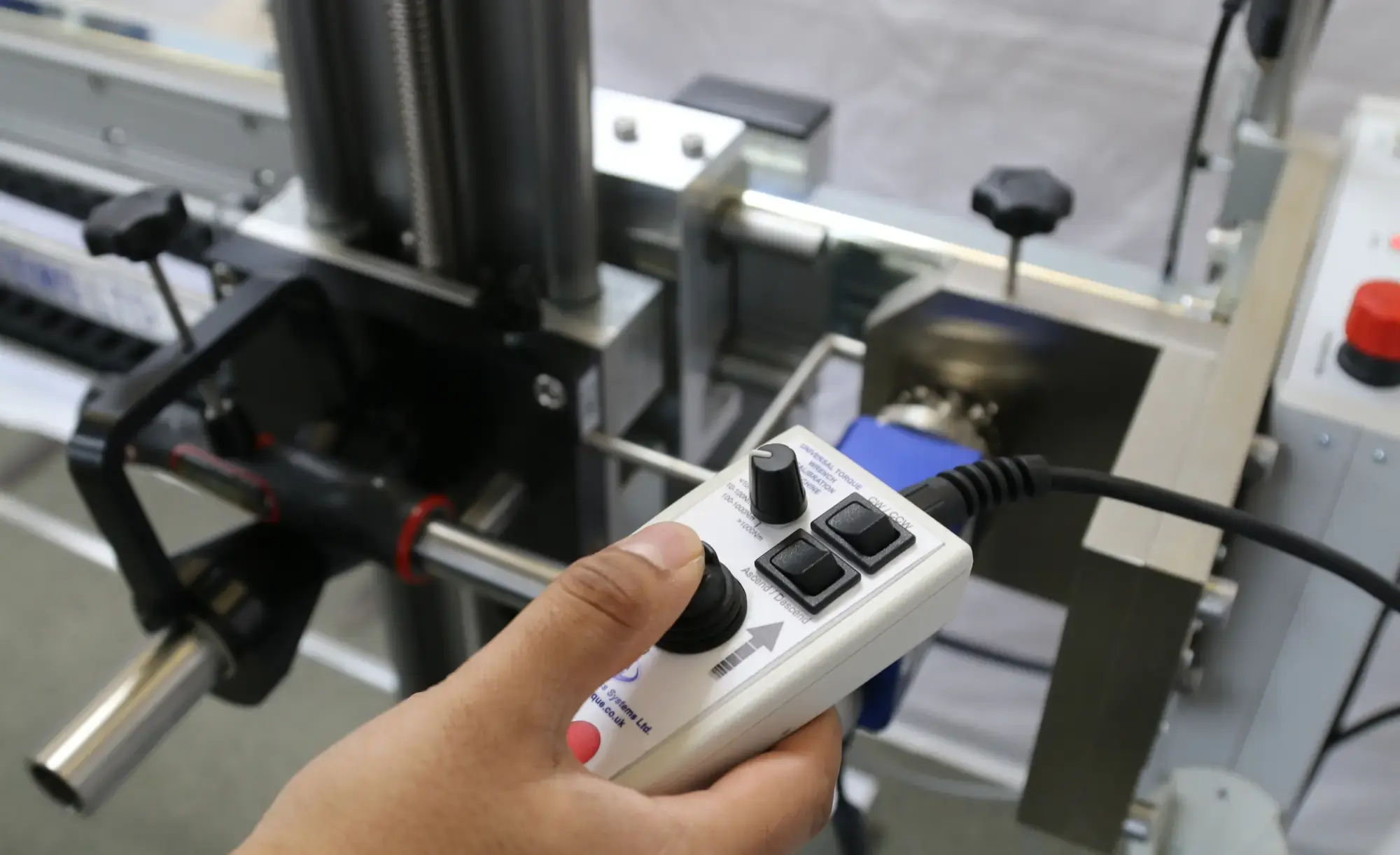
With a brief look at the AWS website, you’ll see numerous mentions to the automated operation of the Universal range of torque calibration machines. But what does this actually mean, and why should you be looking into torque calibrators with automated operation?
Automated operation means that the user controls the calibration machine via a handheld pendant controller, with the torque being applied via a stepper motor and gearbox combination within the machine rather than the user having to apply force to the tool or device themselves, by hand or applying weights.
So why should your laboratory make the switch to automated operation calibration equipment? There are numerous benefits that this technology can bring to your lab, the most beneficial being:
Accredited torque calibrations can be a lengthy process, ensuring you’re complying with the strict timing requirements of standards whilst also minimising uncertainties. So why not get a machine that can handle all this for you? With an automated operation torque calibrator, these concerns are handled by the machine whilst still performing operations quickly, meaning you can get through your calibrations in record time!
Simply put, the faster you can perform the calibrations without manual input errors, the more items you can calibrate. By using automated operation torque calibration machines, you can calibrate more torque tools or torque measuring devices each day, thereby increasing the profit margin of your laboratory, or allowing you to become more competitive in your marketplace.
Have you found staff holidays or sickness has slowed down or even halted your calibration laboratory? Automated operation calibration machines are far simpler to use than their manual equivalents, allowing your other calibration technicians to keep your workflow moving. All the strict timing and force application requirements of torque tool standard ISO 6789:2017 are performed by the automated operation of the AWS torque tool calibration machines.
As the calibration becomes far less dependent on the operator, operator input, errors and uncertainties are reduced when using automated operation torque calibration equipment. If you want to limit operator data entry errors in your torque tool calibrations, why not automatically transmit the readings across to the ADMS Kepler 4 software? This removes any potential typing errors, improves your data integrity as well as speeding up your calibration process even further.
Have you ever found that an out of tolerance tool has overloaded your torque transducer? This isn’t an issue with the AWS automated operation calibration machines. The operator can set a customisable upper limit which defaults to 110% of the transducer range, which stops the machine should the upper limit torque level be detected, thus preventing damage to the transducer or the tool.
But it's not just the laboratory's performance that automated operation helps, it also provides benefits to the operators themselves:
Automated operation means that the operator doesn’t need to worry about following the tricky timing requirements of standards such as ISO 6789:2017, or applying large forces to high capacity torque tools to get a reading. The AWS calibration machines perform all this, requiring the operator to only become easily familiar with machine operation via the simple handheld controller.
Ever find that your back aches or you feel fatigued part way through a work shift? By using a calibration machine with automated operation, the physical demand on the operator is virtually eliminated. So much so that apart from changing the torque values on the tool itself, you can perform the calibration from the comfort of your chair!
Reduced physical demand means reduced risk of injury. Lifting heavy weights around or applying large amounts of force all day can lead to sprains, strains, fractures and breakages, which can put you and your laboratory out of action for weeks and take several years off your career. With automated operation torque calibrators, gone are the days of risking injury in order to apply enough force or move enough weights to perform calibrations. It also helps to comply with your health and safety regulations.
Automated operation is featured on the Universal range of AWS torque calibration machines, with each machine utilising the feature slightly differently:
Universal Torque Wrench Calibration Machine (UTWCM) – Torque is applied at the press of a button on a handheld pendant controller, removing the need for the operator to apply force at the end of the torque wrench. For click type wrenches, the UTWCM will then detect the peak automatically, stopping the machine and removing the torque.
Universal Torque Screwdriver Calibration Machine (UTSCM) – Torque is applied at the press of a button on the handheld pendant controller, with the operator able to select whether the machine performs 1, 3, 5 or 10 operations at a time for click and cam type torque screwdrivers.
Universal Torque Calibration Machine (UTCM) – Torque is applied using a jog joystick on the handheld pendant controller, removing the need for the operator to apply heavy weights to a beams and weights setup.
View our website for datasheets, videos and more information on these machines.